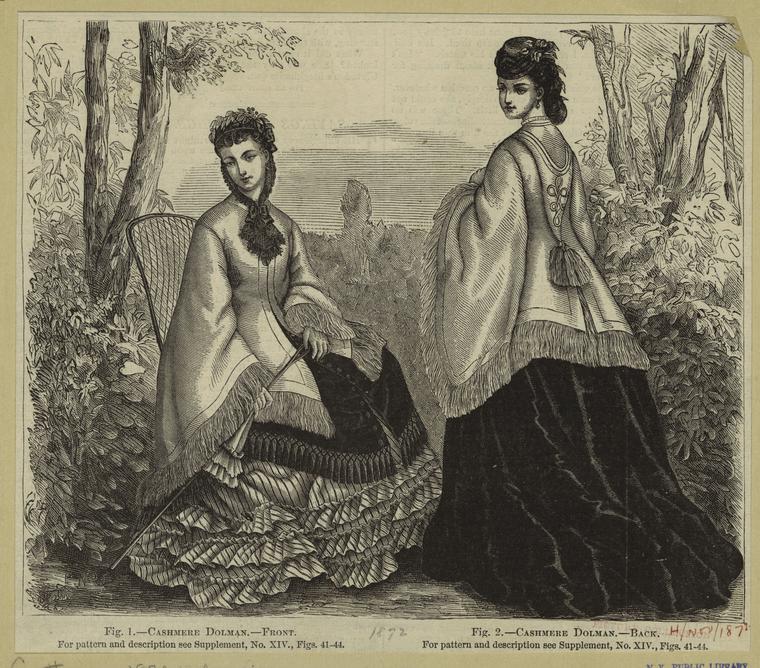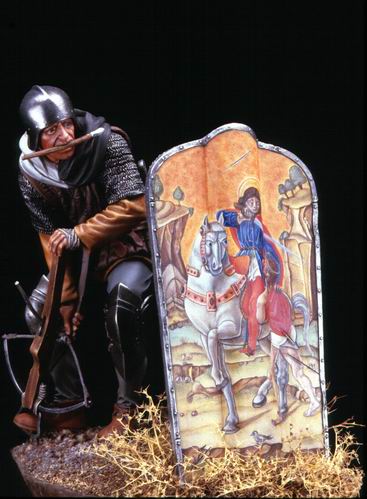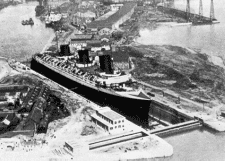|
Mantlet
In medieval warfare a mantlet or was a portable wall or shelter used for stopping projectiles. Some versions used wheels for enhanced mobility. A mantlet could protect one or several soldiers. In the First World War (1914-1918) French soldiers used a mantlet-style device to attack barbed wire entanglements. Gun mantlet In military use from pre-WW2 onward, a mantlet is the thick, protective steel frontal shield, usually able to elevate and depress, which houses the main gun on an armoured tank, examples being Tiger Tank, Sherman Tank and Churchill Tank. Gallery File:Mantelets.defensifs 34.png, A wicker U-shaped mantlet on wheels. Wicker was a popular material for siege defences as it was lightweight, effective and easy to construct. The wheels add further mobility which meant that the user could move forward slowly but surely. File:Mantelets.defensifs 35.png, A wood-planked, L-shaped mantlet on wheels. Wooden-planked construction with proper joinery and even arrow slot ... [...More Info...] [...Related Items...] OR: [Wikipedia] [Google] [Baidu] |
Mantle (clothing)
__NOTOC__ A mantle (from old French ''mantel'', from ''mantellum'', the Latin">-4; we might wonder whether there's a point at which it's appropriate to talk of the beginnings of French, that is, when it wa ... ''mantel'', from ''mantellum'', the Latin term for a cloak) is a type of loose garment usually worn over indoor clothing to serve the same purpose as an overcoat. Technically, the term describes a long, loose cape-like cloak worn from the 12th to the 16th century by both sexes, although by the 19th century, it was used to describe any loose-fitting, shaped outer garment similar to a cape. For example, the dolman, a 19th-century cape-like woman's garment with partial sleeves is often described as a mantle. In English, the idiom "to take up/pick up/assume the mantle" is from the Bible, and means to take a position of authority, leadership or responsibility in a particular area, especially in the sense of carrying on for a previous figure. The most notable appearance in th ... [...More Info...] [...Related Items...] OR: [Wikipedia] [Google] [Baidu] |
Pavise
A pavise (or pavis, pabys, or pavesen) was an oblong shield used during the mid-14th to early 16th centuries. Often large enough to cover the entire body, it was used by archers, crossbowmen, and other infantry soldiers on the battlefield as primarily stationary cover. Etymology The name comes from the city of Pavia, Italy. Historical predecessors The concept of using a shield to cover an archer dates to at least the writing of Homer's ''Iliad'', where Ajax used his shield to cover his half-brother Teucer, an archer, who would "peer round" and shoot arrows. Similar large shields made of wicker were used by Achaemenid sparabara infantry. The Roman army later adopted the scutum, a large rectangular curved shield made from three sheets of wood glued together and covered with canvas and leather, usually with a spindle-shaped boss along the vertical length of the shield. The shape of the scutum allowed packed formations of legionaries to overlap their shields to provide an effec ... [...More Info...] [...Related Items...] OR: [Wikipedia] [Google] [Baidu] |
Medieval Warfare
Medieval warfare is the warfare of the Middle Ages. Technological, cultural, and social advancements had forced a severe transformation in the character of warfare from antiquity, changing military tactics and the role of cavalry and artillery (see military history). In terms of fortification, the Middle Ages saw the emergence of the castle in Europe, which then spread to the Holy Land (modern day Israel and Palestine). Organization The medieval knight was usually a mounted and armoured soldier, often connected with nobility or royalty, although (especially in north-eastern Europe) knights could also come from the lower classes, and could even be enslaved persons. The cost of their armour, horses, and weapons was great; this, among other things, helped gradually transform the knight, at least in western Europe, into a distinct social class separate from other warriors. During the crusades, holy orders of Knights fought in the Holy Land (see Knights Templar, the Hospitalle ... [...More Info...] [...Related Items...] OR: [Wikipedia] [Google] [Baidu] |
Bridge (nautical)
A bridge (also known as a command deck), or wheelhouse (also known as a pilothouse), is a room or platform of a ship, submarine, airship, or spacecraft, spaceship from which the ship can be commanded. When a ship is under way, the bridge is manned by an Watchstanding, officer of the watch aided usually by an Able Seaman (occupation), able seaman acting as a lookout. During critical maneuvers the Captain (naval), captain will be on the bridge, often supported by an officer of the watch, an able seaman on the wheel and sometimes a Maritime pilot, pilot, if required. File:Bridge of Cargo Ship in Port Everglades.jpg, Navigational bridge of a cargo ship docked in Port Everglades, Florida File:Bridge of the RV Sikuliaq.jpg, The interior of the bridge of the Research Vessel ''RV Sikuliaq, Sikuliaq'', docked in Ketchikan, Alaska File:Wheelhouse of Leao Dos Mares.jpg, Wheelhouse on a tugboat, topped with a flying bridge File:Bridge of a Modern Cruise Ship.jpg, Appearance of a bridge on a ... [...More Info...] [...Related Items...] OR: [Wikipedia] [Google] [Baidu] |
Gabion
A gabion (from Italian ''gabbione'' meaning "big cage"; from Italian ''gabbia'' and Latin ''cavea'' meaning "cage") is a cage, cylinder or box filled with rocks, concrete, or sometimes sand and soil for use in civil engineering, road building, military applications and landscaping. For erosion control, caged riprap is used. For dams or in foundation construction, cylindrical metal structures are used. In a military context, earth- or sand-filled gabions are used to protect sappers, infantry, and artillerymen from enemy fire. Leonardo da Vinci designed a type of gabion called a ''Corbeille Leonard'' ("Leonard basket") for the foundations of the San Marco Castle in Milan. Civil engineering The most common civil engineering use of gabions was refined and patented by Gaetano Maccaferri in the late 19th century in Sacerno, Emilia Romagna and used to stabilize shorelines, stream banks or slopes against erosion. Other uses include retaining walls, noise barriers, temporary fl ... [...More Info...] [...Related Items...] OR: [Wikipedia] [Google] [Baidu] |
Chemise (wall)
In medieval castles, the chemise ( French: "shirt") was typically a low wall encircling the keep, protecting the base of the tower. Alternative terms, more commonly used in English, are mantlet wall or apron wall.Friar, Stephen (2003). ''The Sutton Companion to Castles'', Sutton Publishing, Stroud, 2003, pp. 4, 67 & 190. In some cases, the keep could be entered only from the chemise (i.e. at the first floor level). Numerous examples exist of highly varied form, including the heavily fortified chemise of Château de Vincennes, or the more modest example at Provins, both in France France, officially the French Republic, is a country located primarily in Western Europe. Overseas France, Its overseas regions and territories include French Guiana in South America, Saint Pierre and Miquelon in the Atlantic Ocean#North Atlan .... Some chemises are suggested to have been developed from earlier motte and bailey defences, though they may not usually be referred to as chemise. I ... [...More Info...] [...Related Items...] OR: [Wikipedia] [Google] [Baidu] |
St Nazaire Raid
The St Nazaire Raid or Operation Chariot was a British amphibious attack on the heavily defended Louis Joubert Lock, Normandie dry dock at St Nazaire in German occupation of France during World War II, German-occupied France during the Second World War. The operation was undertaken by the Royal Navy (RN) and British Commandos under the auspices of Combined Operations Headquarters on 28 March 1942. St Nazaire was targeted because the loss of its dry dock would force Germany's largest battleship, , to return to home waters if she were damaged. This would expose her to attack by British forces including the Home Fleet in the English Channel or the North Sea. The obsolete destroyer , accompanied by 18 smaller craft, crossed the English Channel to the Atlantic coast of France and rammed into the Normandie dry dock south gate. The ship had been packed with delayed-action explosives, well hidden within a steel and concrete case, that detonated later that day, putting the dock out of ... [...More Info...] [...Related Items...] OR: [Wikipedia] [Google] [Baidu] |
World War II
World War II or the Second World War (1 September 1939 – 2 September 1945) was a World war, global conflict between two coalitions: the Allies of World War II, Allies and the Axis powers. World War II by country, Nearly all of the world's countries participated, with many nations mobilising all resources in pursuit of total war. Tanks in World War II, Tanks and Air warfare of World War II, aircraft played major roles, enabling the strategic bombing of cities and delivery of the Atomic bombings of Hiroshima and Nagasaki, first and only nuclear weapons ever used in war. World War II is the List of wars by death toll, deadliest conflict in history, causing World War II casualties, the death of 70 to 85 million people, more than half of whom were civilians. Millions died in genocides, including the Holocaust, and by massacres, starvation, and disease. After the Allied victory, Allied-occupied Germany, Germany, Allied-occupied Austria, Austria, Occupation of Japan, Japan, a ... [...More Info...] [...Related Items...] OR: [Wikipedia] [Google] [Baidu] |
Royal Navy
The Royal Navy (RN) is the naval warfare force of the United Kingdom. It is a component of His Majesty's Naval Service, and its officers hold their commissions from the King of the United Kingdom, King. Although warships were used by Kingdom of England, English and Kingdom of Scotland, Scottish kings from the early Middle Ages, medieval period, the first major maritime engagements were fought in the Hundred Years' War against Kingdom of France, France. The modern Royal Navy traces its origins to the English Navy of the early 16th century; the oldest of the British Armed Forces, UK's armed services, it is consequently known as the Senior Service. From the early 18th century until the World War II, Second World War, it was the world's most powerful navy. The Royal Navy played a key part in establishing and defending the British Empire, and four Imperial fortress colonies and a string of imperial bases and coaling stations secured the Royal Navy's ability to assert naval superior ... [...More Info...] [...Related Items...] OR: [Wikipedia] [Google] [Baidu] |
World War I
World War I or the First World War (28 July 1914 – 11 November 1918), also known as the Great War, was a World war, global conflict between two coalitions: the Allies of World War I, Allies (or Entente) and the Central Powers. Fighting took place mainly in European theatre of World War I, Europe and the Middle Eastern theatre of World War I, Middle East, as well as in parts of African theatre of World War I, Africa and the Asian and Pacific theatre of World War I, Asia-Pacific, and in Europe was characterised by trench warfare; the widespread use of Artillery of World War I, artillery, machine guns, and Chemical weapons in World War I, chemical weapons (gas); and the introductions of Tanks in World War I, tanks and Aviation in World War I, aircraft. World War I was one of the List of wars by death toll, deadliest conflicts in history, resulting in an estimated World War I casualties, 10 million military dead and more than 20 million wounded, plus some 10 million civilian de ... [...More Info...] [...Related Items...] OR: [Wikipedia] [Google] [Baidu] |
Projectiles
A projectile is an object that is propelled by the application of an external force and then moves freely under the influence of gravity and air resistance. Although any objects in motion through space are projectiles, they are commonly found in warfare and sports (for example, a thrown baseball, kicked football, fired bullet, shot arrow, stone released from catapult). In ballistics, mathematical equations of motion are used to analyze projectile trajectories through launch, flight, and impact. Motive force Blowguns and pneumatic rifles use compressed gases, while most other guns and cannons utilize expanding gases liberated by sudden chemical reactions by propellants like smokeless powder. Light-gas guns use a combination of these mechanisms. Railguns utilize electromagnetic fields to provide acceleration along the entire length of the device, greatly increasing the muzzle velocity. Some projectiles provide propulsion during flight by means of a rocket engine or ... [...More Info...] [...Related Items...] OR: [Wikipedia] [Google] [Baidu] |







